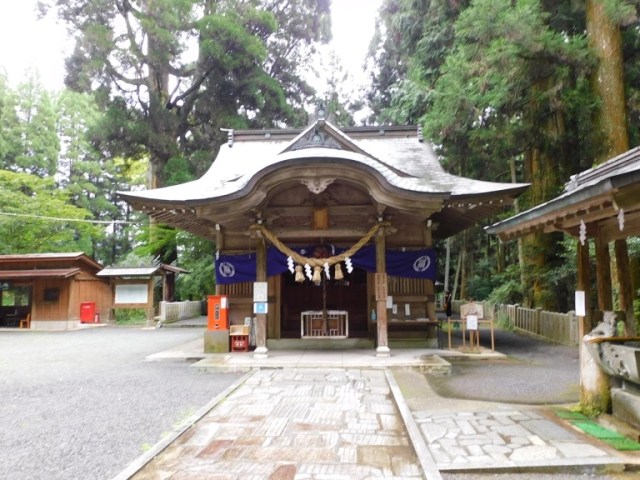
We visit this unusual shrine in a Kumamoto canyon and drink its water of eternal youth.
In Japan, you’ll find a lot of shrines on hilltops and mountainsides. The Shinto faith holds that there is divinity in nature, and with some shrines having been founded hundreds of years ago, being built at a high elevation provided a good vantage point from which to survey the surrounding area.
So if you’re someone who visits a lot of shrines, like our Japanese-language reporter Seiji Nakazawa, you get used to climbing up flights of stairs on your way to make an offering. So imagine Seiji’s surprise when, on his recent travels through Kumamoto Prefecture, he came across a torii gate, the traditional marker of the entrance to a Shinto shrine, but when he walked through it…
…he found a series of steps on a steep decline down to the shrine.
The layout felt unnatural and backwards, and there was one other reason Seiji felt a foreboding atmosphere. Shrines like this are called kudarimiya (“descending shrines”), and some people say they mark a site where an evil spirit, or a spirit on the verge of turning evil, was sealed away.
Looking down the stairs, Seiji almost felt like the shrine was glaring up at him. And yet, he felt compelled to go and take a closer look, and so he took his first step down.
150 steps later, he was in the shrine’s courtyard, which had a secluded atmosphere from the heavily forested hills on all sides and the misty weather.
This shrine, called Kusabe Yoshimi Shrine, is considered one of Japan’s three great kudarimiya, the others being Udo Shrine in Miyazaki Prefecture and Nukimae Shrine in Gunma Prefecture. And sure enough, Kusabe Yoshimi does have a legend of a monstrous entity that needed to be subdued.
According to legend, Hikoyai no Mikoto, oldest son of Emperor Jinmu, the first emperor of Japan, journeyed to the site where Kusabe Yoshimi Shrine now stands to do battle with a giant serpent that had been terrifying the community.
Back in the courtyard, Seiji paused for a moment to admire the shrine’s sacred cedar, which is more than 500 years old.
▼ There were no cameras in the world when this tree first sprouted from the soil.
Before making your way back up the stairway, though, there’s one more path to explore.
Next to another torii is a sign directing visitors to the “water of eternal youth and longevity” (written as 不老長寿の水 in Japanese text). This trail leads you into the forest and past…
…what appears to be a stone statue of the mythical serpent!
Surprisingly, the statue is actually kind of cute-looking, and people seem to have decided to let bygones be bygones, leaving offerings of coins in its mouth.
Eventually, Seiji came to a well. There’s no sign or other explanation, but he figured this must be the water of eternal youth.
Since our team is always looking for ways to improve our health, Seiji used the ladle to fill his cupped hand with water, and took a sip.
Compared to the Tokyo tap water he usually drinks, the water of eternal youth and longevity has a crisp, clean taste with no sort of lingering aftertaste or other odd sensations. It was like drinking purified bottled water, except that it came from a well.
And now that he’s guaranteed a long and healthy life, Seiji can confidently look forward to visiting the rest of Japan’s three great kudariya someday.
Shrine information
Kusabe Yoshimi Shrine / 草部吉見神社
Address: Kumamoto-ken, Aso-gun, Takamori Kusabe 2175
熊本県阿蘇郡高森町草部2175
Website
Photos ©SoraNews24
● Want to hear about SoraNews24’s latest articles as soon as they’re published? Follow us on Facebook and Twitter!
[ Read in Japanese ]

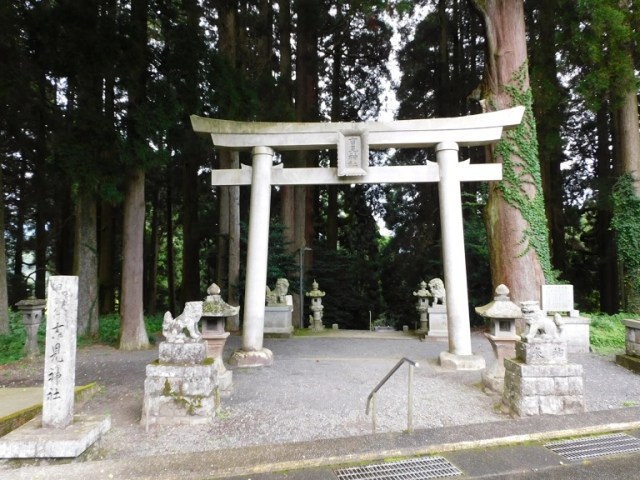
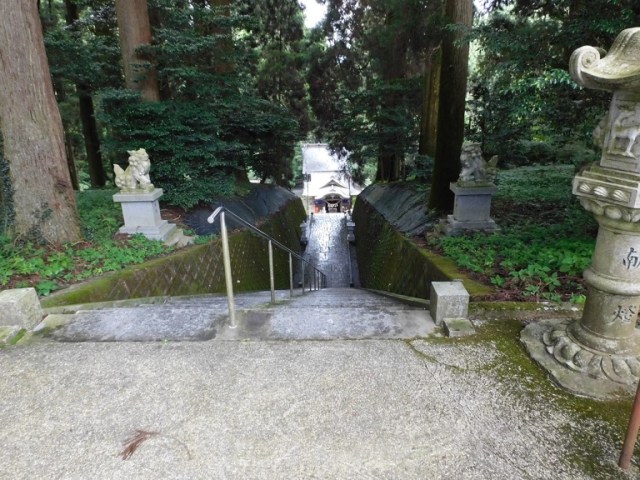
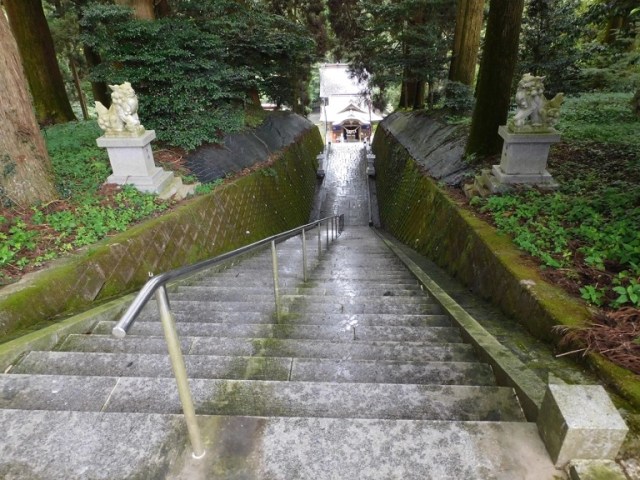
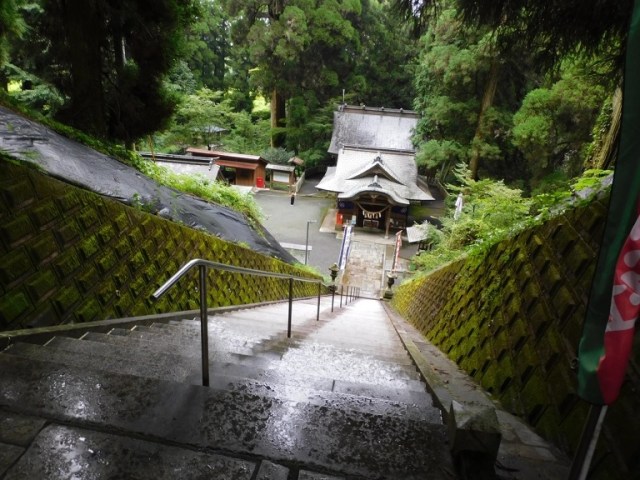
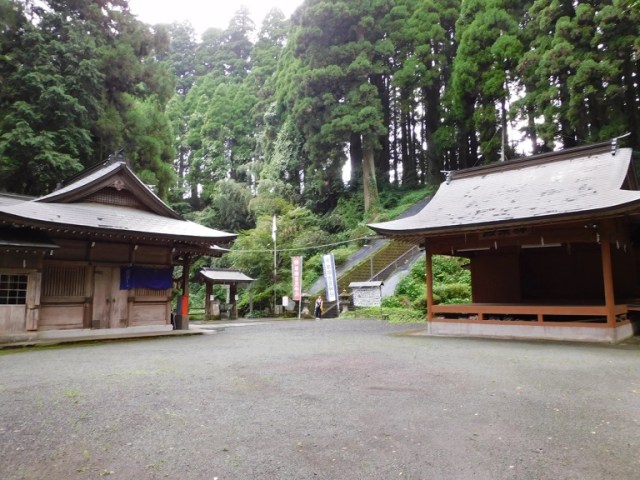
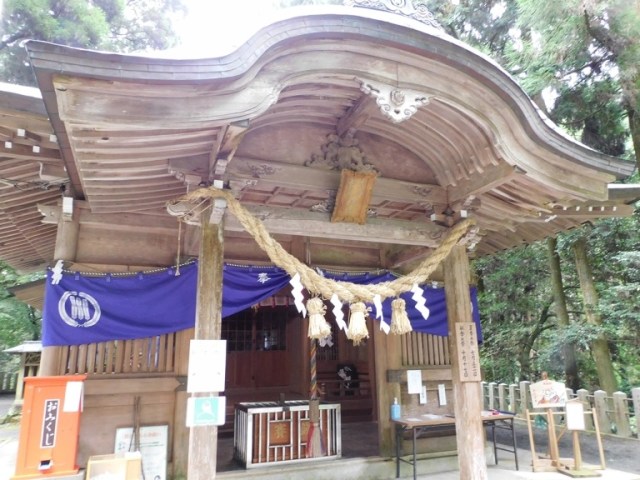
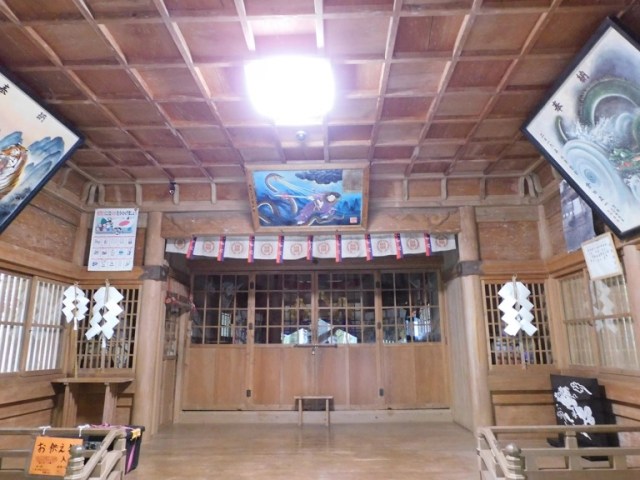
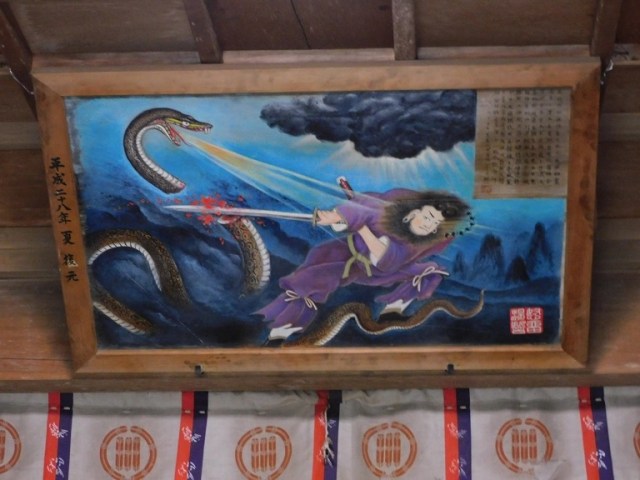
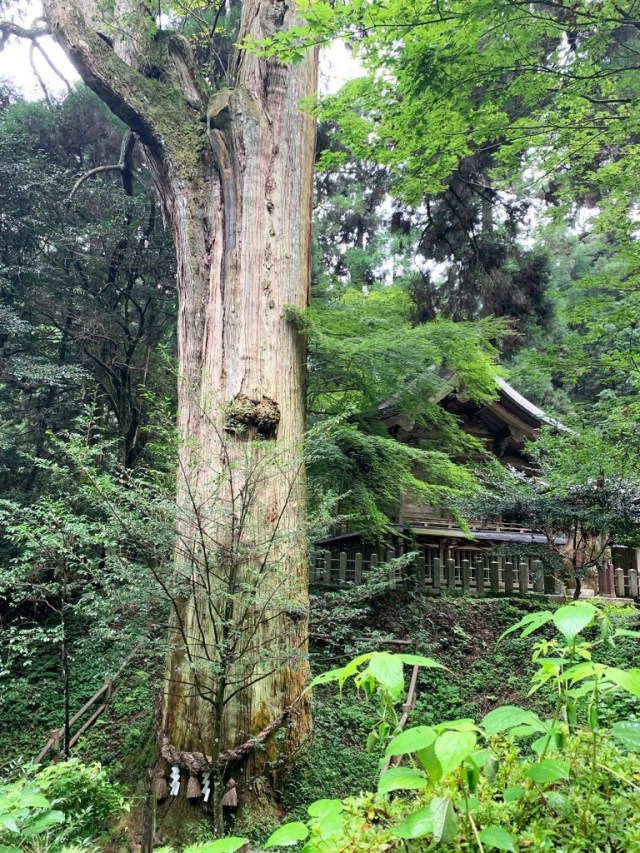
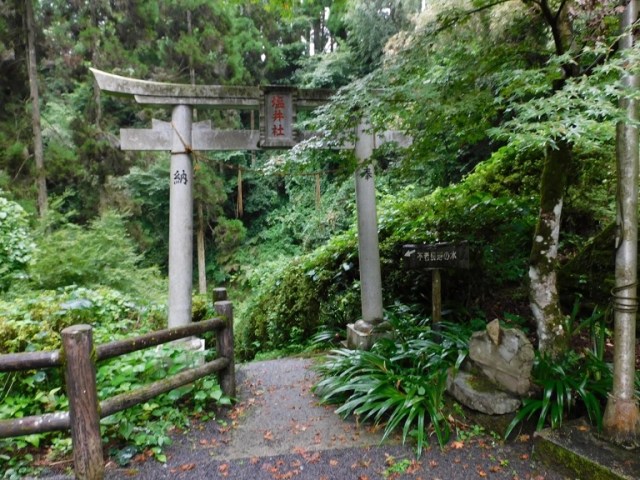
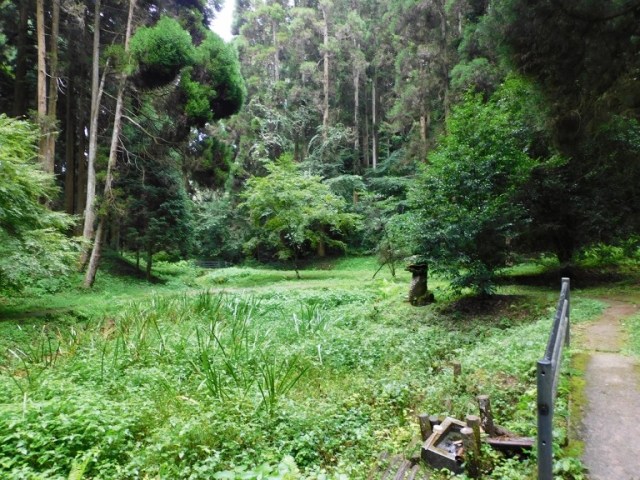
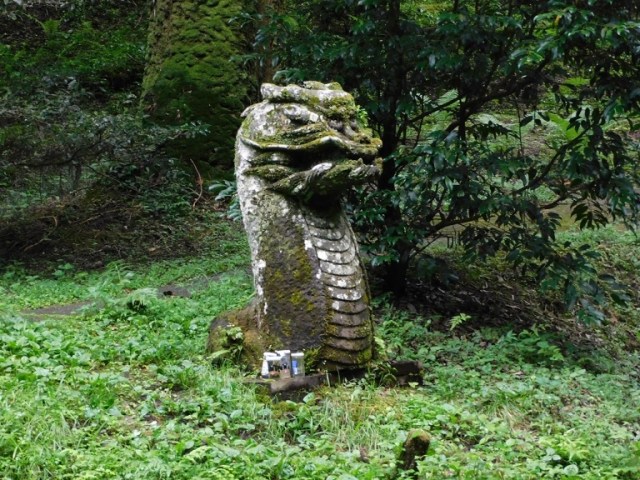
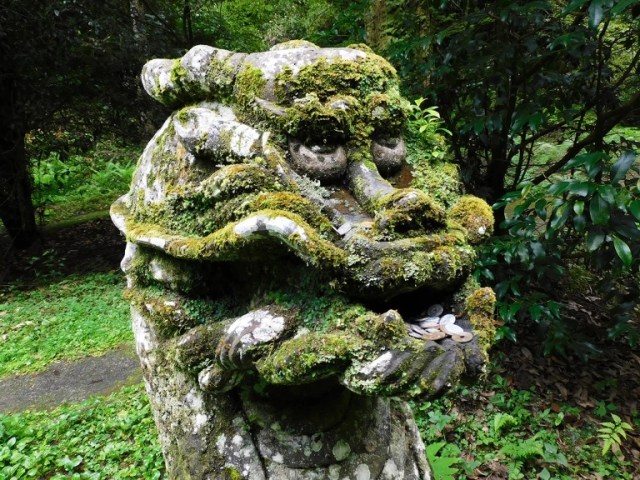
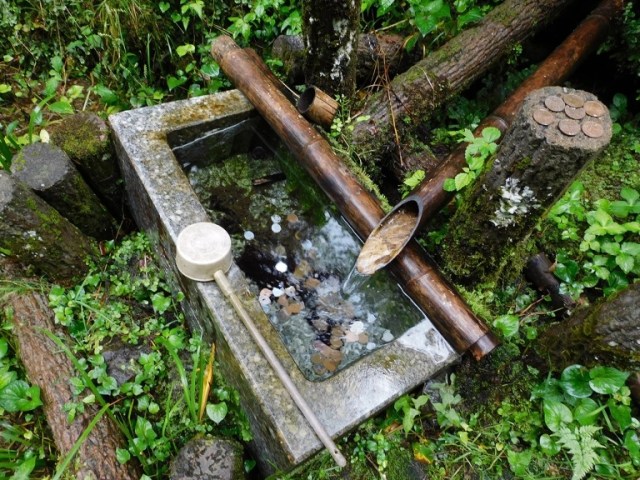
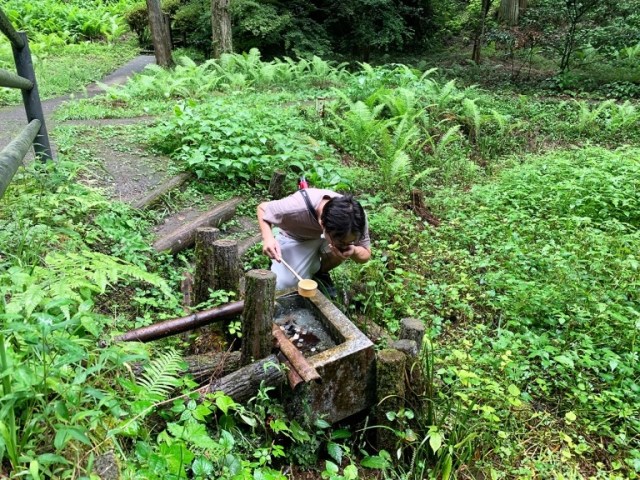
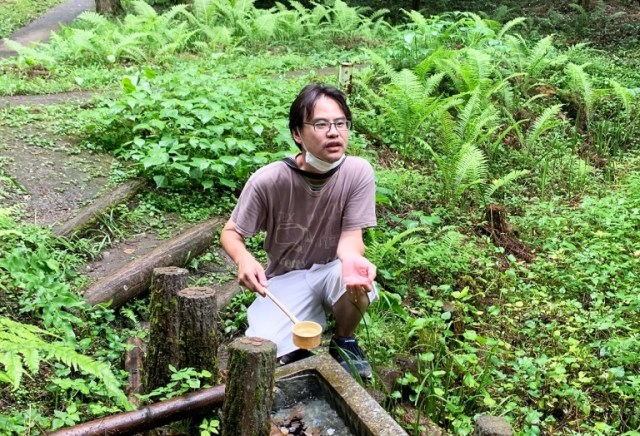
 Testing our luck – Can visiting Japan’s power spots improve the omikuji temple fortune you draw?
Testing our luck – Can visiting Japan’s power spots improve the omikuji temple fortune you draw? Shrine in Japan issues “beautiful woman certificates,” so we went to get one【Photos】
Shrine in Japan issues “beautiful woman certificates,” so we went to get one【Photos】 Real-life Demon Slayer? A visit to the legendary split boulder of Haban Shrine【Photos】
Real-life Demon Slayer? A visit to the legendary split boulder of Haban Shrine【Photos】 Staying one step ahead of the tourist crowds with a visit to Japan’s main Mt. Fuji shrine【Photos】
Staying one step ahead of the tourist crowds with a visit to Japan’s main Mt. Fuji shrine【Photos】 This Shinto shrine’s gorgeous glass gateways are the only ones of their kind in all Japan【Photos】
This Shinto shrine’s gorgeous glass gateways are the only ones of their kind in all Japan【Photos】 The Purple Lucky Bag from Village Vanguard is an extra-large waste of money
The Purple Lucky Bag from Village Vanguard is an extra-large waste of money Rakuten randomly offers 58 New Year’s osechi feasts in Japan, but did we get a star or a dud?
Rakuten randomly offers 58 New Year’s osechi feasts in Japan, but did we get a star or a dud? Japanese beef bowl chain Sukiya’s 2026 Smile Box lucky bag basically pays for itself
Japanese beef bowl chain Sukiya’s 2026 Smile Box lucky bag basically pays for itself Majority of Japanese mayors say foreign residents are essential but most see good and bad effects
Majority of Japanese mayors say foreign residents are essential but most see good and bad effects National Geographic names Yamagata Prefecture on its “Best of the World 2026” travel destinations
National Geographic names Yamagata Prefecture on its “Best of the World 2026” travel destinations Manga artist raises question online about false perspective in Ghibli film My Neighbor Totoro
Manga artist raises question online about false perspective in Ghibli film My Neighbor Totoro Don’t point that camera at me! Man arrested for taking “normal” picture on train
Don’t point that camera at me! Man arrested for taking “normal” picture on train We found possibly the quietest Japanese-style hotel in Tokyo’s bustling Shinjuku district
We found possibly the quietest Japanese-style hotel in Tokyo’s bustling Shinjuku district 7-Eleven now sells rice burgers in Japan, blurring the line between fast and convenience store food
7-Eleven now sells rice burgers in Japan, blurring the line between fast and convenience store food Starbucks Japan ready to get Year of the Horse started with adorable drinkware and plushies【Pics】
Starbucks Japan ready to get Year of the Horse started with adorable drinkware and plushies【Pics】 Hayao Miyazaki says Happy New Year to Studio Ghibli fans with new art for Year of the Horse
Hayao Miyazaki says Happy New Year to Studio Ghibli fans with new art for Year of the Horse Cup Noodle tries an authentic Jiro-style ramen, but something’s not quite right
Cup Noodle tries an authentic Jiro-style ramen, but something’s not quite right The best Starbucks Japan Frappuccinos we want to drink again in 2026
The best Starbucks Japan Frappuccinos we want to drink again in 2026 We revisited Sweets Paradise after a decade to see if Japan’s dessert buffet still delivers
We revisited Sweets Paradise after a decade to see if Japan’s dessert buffet still delivers That time Seiji called JASRAC to ask why he didn’t get paid royalties for his song being on TV
That time Seiji called JASRAC to ask why he didn’t get paid royalties for his song being on TV Japan’s oldest largetooth sawfish in captivity back on display in Mie Prefecture
Japan’s oldest largetooth sawfish in captivity back on display in Mie Prefecture Pizza Hut Japan’s hot lucky bags are perfect for a New Year’s pizza party
Pizza Hut Japan’s hot lucky bags are perfect for a New Year’s pizza party 7-Eleven Japan starts new temporary luggage storage service in over 300 branches
7-Eleven Japan starts new temporary luggage storage service in over 300 branches Disillusionment at Tsukiji’s tourist-target prices led us to a great ramen restaurant in Tokyo
Disillusionment at Tsukiji’s tourist-target prices led us to a great ramen restaurant in Tokyo Starbucks teams up with 166-year-old Kyoto doll maker for Year of the Horse decorations【Photos】
Starbucks teams up with 166-year-old Kyoto doll maker for Year of the Horse decorations【Photos】 Tokyo considering law requiring more trash cans following litter increase in heavily touristed area
Tokyo considering law requiring more trash cans following litter increase in heavily touristed area Tokyo’s Tsukiji sushi neighborhood asks tour groups to stay away for the rest of the month
Tokyo’s Tsukiji sushi neighborhood asks tour groups to stay away for the rest of the month Tokyo event lets you travel back in time, for free, to celebrate 100 years since Showa era start
Tokyo event lets you travel back in time, for free, to celebrate 100 years since Showa era start Japan may add Japanese language proficiency, lifestyle classes to permanent foreign resident requirements
Japan may add Japanese language proficiency, lifestyle classes to permanent foreign resident requirements Sanrio theme park in Japan announces plans to expand into a Sanrio resort
Sanrio theme park in Japan announces plans to expand into a Sanrio resort Stamina-destroying “Paralysis Noodles” are Tokyo’s newest over-the-top ramen innovation
Stamina-destroying “Paralysis Noodles” are Tokyo’s newest over-the-top ramen innovation Survey asks foreign tourists what bothered them in Japan, more than half gave same answer
Survey asks foreign tourists what bothered them in Japan, more than half gave same answer Japan’s human washing machines will go on sale to general public, demos to be held in Tokyo
Japan’s human washing machines will go on sale to general public, demos to be held in Tokyo Japan’s deadliest food claims more victims, but why do people keep eating it for New Year’s?
Japan’s deadliest food claims more victims, but why do people keep eating it for New Year’s? We deeply regret going into this tunnel on our walk in the mountains of Japan
We deeply regret going into this tunnel on our walk in the mountains of Japan Studio Ghibli releases Kodama forest spirits from Princess Mononoke to light up your home
Studio Ghibli releases Kodama forest spirits from Princess Mononoke to light up your home Major Japanese hotel chain says reservations via overseas booking sites may not be valid
Major Japanese hotel chain says reservations via overseas booking sites may not be valid Put sesame oil in your coffee? Japanese maker says it’s the best way to start your day【Taste test】
Put sesame oil in your coffee? Japanese maker says it’s the best way to start your day【Taste test】 No more using real katana for tourism activities, Japan’s National Police Agency says
No more using real katana for tourism activities, Japan’s National Police Agency says Starbucks Japan reveals new sakura drinkware collection, inspired by evening cherry blossoms
Starbucks Japan reveals new sakura drinkware collection, inspired by evening cherry blossoms Updated cherry blossom forecast shows extra-long sakura season for Japan this year
Updated cherry blossom forecast shows extra-long sakura season for Japan this year A visit to one of Japan’s motorcycle Shinto shrines
A visit to one of Japan’s motorcycle Shinto shrines Can the powers of the Tokyo area’s literal money-laundering shrine make us rich? We find out
Can the powers of the Tokyo area’s literal money-laundering shrine make us rich? We find out A visit to Japan’s priest murder party cliffs of Tojinbo【Photos】
A visit to Japan’s priest murder party cliffs of Tojinbo【Photos】 Mysterious salt cauldrons predict disasters at one of the “Three Great Miracles of Japan”
Mysterious salt cauldrons predict disasters at one of the “Three Great Miracles of Japan” This is Japan’s only shrine with a Shinkansen tunnel underneath it
This is Japan’s only shrine with a Shinkansen tunnel underneath it Why this centuries’ old Shinto shrine is suddenly also a hot spot for anime fan art【Photos】
Why this centuries’ old Shinto shrine is suddenly also a hot spot for anime fan art【Photos】 Visiting Kunozan Toshogu, the shrine where the first lord of Japan’s last shogunate was buried
Visiting Kunozan Toshogu, the shrine where the first lord of Japan’s last shogunate was buried A visit to “the most blessed kappa statues in all of Japan”【Photos】
A visit to “the most blessed kappa statues in all of Japan”【Photos】 Travel secrets: East Japan’s own Monet Pond and Kiyomizu in Tochigi【Photos】
Travel secrets: East Japan’s own Monet Pond and Kiyomizu in Tochigi【Photos】 Japan’s smallest Toshogu Shrine: A tiny wonder with a big samurai connection
Japan’s smallest Toshogu Shrine: A tiny wonder with a big samurai connection This balding middle-aged fairy is one of Japan’s most unique mascot characters
This balding middle-aged fairy is one of Japan’s most unique mascot characters An anime pilgrimage even non-anime fans will love: Visiting the Slam Dunk movie shrine【Photos】
An anime pilgrimage even non-anime fans will love: Visiting the Slam Dunk movie shrine【Photos】 Century-old Hiroshima brewery in one of Japan’s three great sake-brewing spots offers tours in English
Century-old Hiroshima brewery in one of Japan’s three great sake-brewing spots offers tours in English Eight unforgettable hot springs, as recommended by Japan’s “Professor Bath”
Eight unforgettable hot springs, as recommended by Japan’s “Professor Bath” An up-close look at one of Japan’s five Ryuseito swords, forged from meteorites【Photos】
An up-close look at one of Japan’s five Ryuseito swords, forged from meteorites【Photos】
Leave a Reply